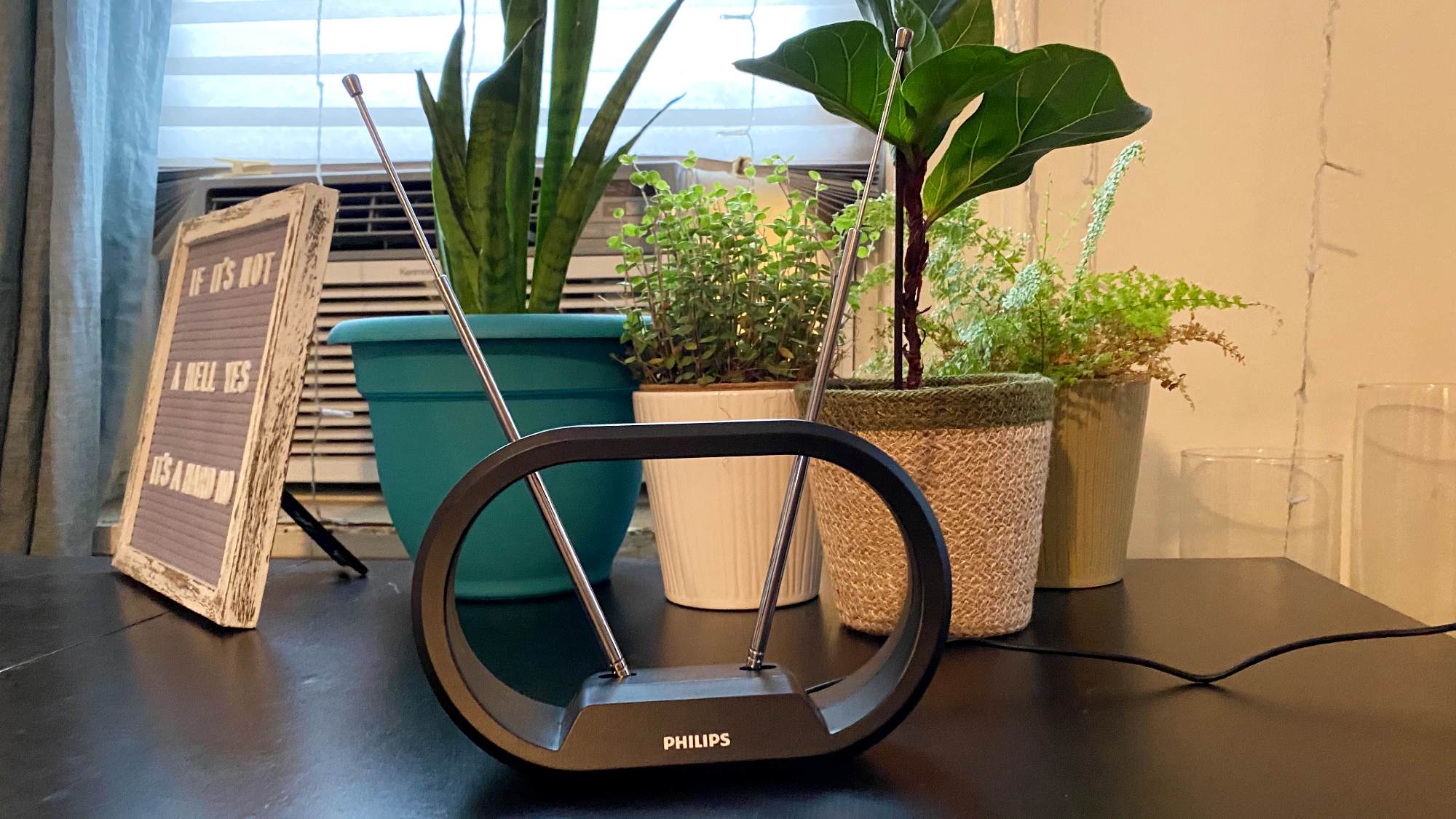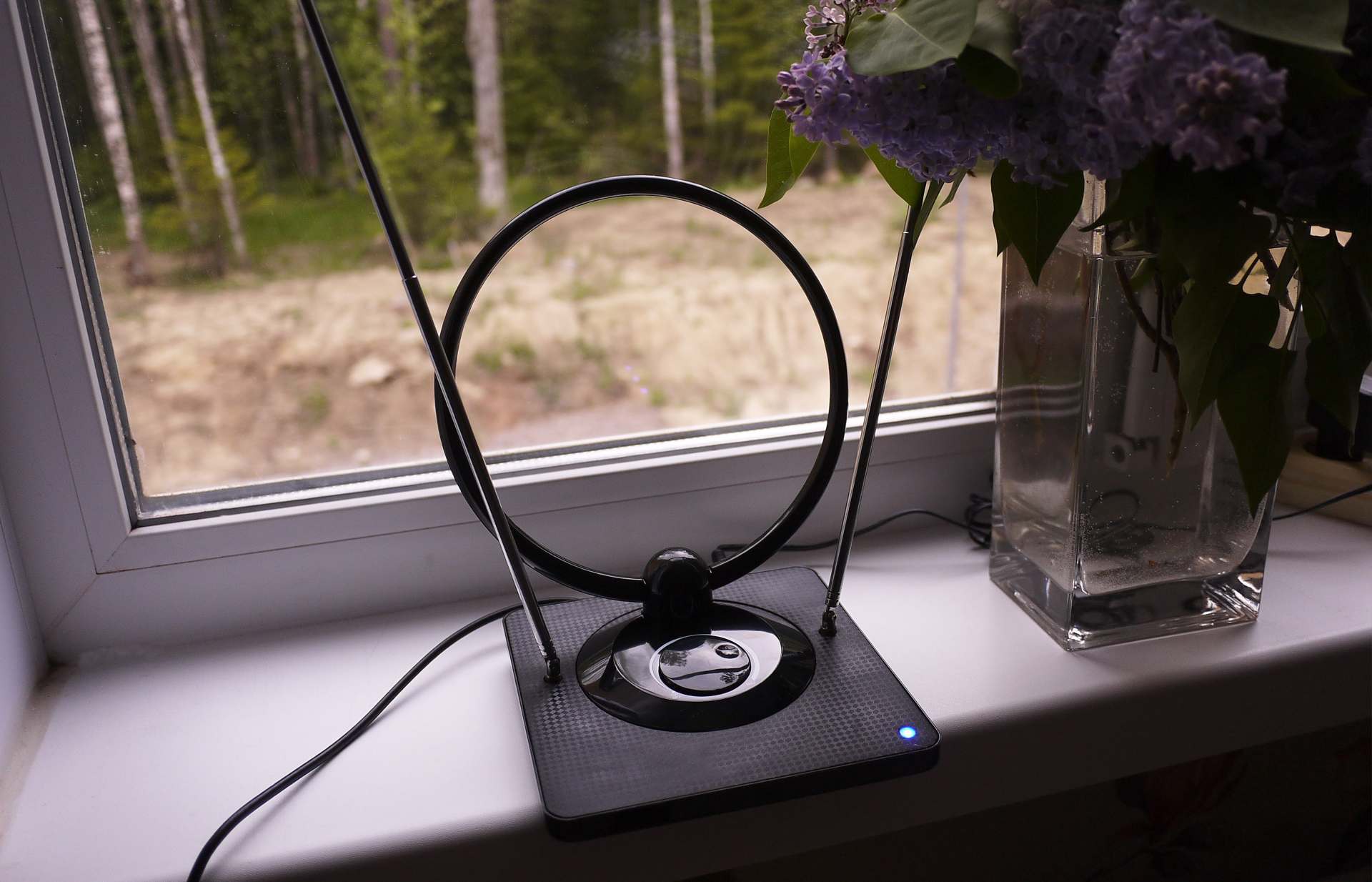
Cutting the cord is easier than ever these days. Easier not easy. I very nearly gave up on my cord-cutting strategy until a $12 TV antenna turned it all around.
A few months ago, I finally canceled cable, after mulling over several different live TV options and ultimately deciding to go with Sling. The streaming service offered the best combination of value and features, as well as a specific list of must-have channels including the broadcast networks (ABC, CBS, Fox, NBC and The CW).
While YouTube TV and Fubo TV are great services, I crunched the numbers and found that getting Sling TV service, along with its AirTV Anywhere device, would save me the most over the long term. The AirTV Anywhere hooks up to an HD digital antenna and pulls in local channel feeds.
I had never used an HD digital antenna before, but it sounded like the latest technology, so it should work perfectly, right?
(Narrator: It did not work perfectly.)
- Cut the cord with the best cable TV alternatives
- Top cheap TV antennas, ranked best to worst
- Plus: How to watch The Great British Baking Show 2021 online
New doesn't mean better
To go with the AirTV Anywhere, I got an amplified HD digital antenna that retails for around $50. The antenna looks like most of the models you'll find if you search for "digital antenna" on Amazon. It's a flat, thin, 12x13 inch piece of plastic that feels like a poster.
Installing both devices was easy. I was able to use Sling's mobile app to quickly find local channels and add them to my guide.
Get instant access to breaking news, the hottest reviews, great deals and helpful tips.
Then, technical issues began to crop up around recording shows on the broadcast networks. For instance, one episode of ABC's The Bachelorette never got recorded, while another was very glitchy.
At the time, I chalked it up to the fact that a storm had been raging outside during the glitchy recording. Antennas are notoriously unreliable in poor weather. They pick up signals that are sent through the air, from towers. Along the way to your house, the signals contend with buildings, mountains, trees and other obstructions, not to mention any rain and wind. All of that can result in an erratic and fluctuating broadcast.
I also live on the ground floor, and most antenna experts recommend placing one as high as possible — on the roof, even. Alas, that's not feasible in my urban dwelling. However, I did put the antenna right in front of a window.
As the weeks passed, I had more problems with watching and recording ABC. At one point, the feed was completely garbled. This was unacceptable come September, when I absolutely must be able to watch and record Grey's Anatomy. I began to reconsider my choice to go with Sling over YouTube TV and Fubo. I even started to miss my mortal enemy, Spectrum Cable.
Maybe cord-cutting was just not going to cut it for me.
Something old is something that works
Not ready to completely give up, I wondered if this antenna wasn't powerful enough, so I perused our list of the best TV antennas. The top-rated Mohu Leaf Supreme Pro is lauded for its built-in amplifier and solid reception. However, it costs around $80 and I hesitated to invest in another antenna, only to discover it doesn't perform any better than the one I already had.
So, I did some sleuthing online. And I discovered the ABC feed in my city is VHF, not UHF. Many flat digital antennas aren't great at picking up VHF signals (despite what they say in their product descriptions).
What I really needed was something we had when I was a kid: a rabbit-ears antenna.

For younger readers, a rabbit or bunny ears antenna features two telescoping rods attached to a base. The rods can be lengthened and swiveled to point in different directions.
Technically, there's not really any difference between a "digital" TV antenna and the a rabbit ears one. The signals are on the same airwaves they've always been, and the differences between modern digital broadcasts and older analog signal involve the tuner, not the antenna. "Digital" is more of a marketing term than anything else. Same with the "HD" on any "HD TV Antenna."
As a child, I remember adjusting our television set's rabbit ears whenever the picture got grainy or began to flicker. In desperate times, we'd experiment with miniscule movements of the ears until — success! — the picture was clear.
With those fond memories in mind, I purchased a Philips Modern Loop Rabbit Ears Indoor TV Antenna for $12. I placed it by the window, hooked it up to the AirTV Anywhere and reset the local channels.
Now, a month later, I haven't had a single problem watching or recording ABC or any of the other local channels — even during the torrential downpour brought by Hurricane Ida.
New tech doesn't always equal the best tech for all situations. As someone who lives in my particular city, in my particular home, an OG rabbit ears antenna worked the best. But your mileage may vary if you live in a suburban or rural area and have roof access. When it comes to cord-cutting, there really isn't one solution for everybody.

Kelly is the managing editor of streaming for Tom’s Guide, so basically, she watches TV for a living. Previously, she was a freelance entertainment writer for Yahoo, Vulture, TV Guide and other outlets. When she’s not watching TV and movies for work, she’s watching them for fun, seeing live music, writing songs, knitting and gardening.
